Tekonsha Prodigy P3 Trailer Brake Controller w/ Custom Harness - Up to 4 Axles - Proportional
with factory 4-Flat
with factory 7-Way
without factory Tow Package
Will this fit?
To see if this custom-fit item will work for you please tell us what vehicle you'll use it with.
- All Info
- Reviews (6614)
- Q & A (0)
- Videos (6)
- Photos
Tekonsha Trailer Brake Controller
- Electric
- Electric over Hydraulic
- Proportional Controller
- Up to 4 Axles
- Tekonsha
- Under-Dash
- Plug-In
- Under-Dash Box
- Multiple Trailers
- LCD Display
The Tekonsha P3 is a brake controller beloved for its reliability and useability. You're able to save your settings and multiple profiles. It's easy to install, and with the custom harness, it's plug-and-play.
Features:
- Proportional - Smooth, safe, and good for your brakes long-term
- Great for a fleet - Save and customize multiple profiles
- Installs quickly - Mount the bracket to the dash, then attach the unit to the bracket
- Plug-and-play - Custom harness included
- Simple controls - Large, accessible buttons for all your settings
- Easy-to-read display includes diagnostics - Straight-forward messages get you to the root of the problem quickly
- Safe - Built-in safeguards protect vehicle, trailer, and controller
- Quick disconnect - Easy to unplug and remove the controller when you don't need it
- Automatic leveling - Must be parallel with direction of travel and horizontally level
Specs:
- Application: trailers with up to 4 axles (8 brake assemblies)
- Compatible with electric or electric-over-hydraulic trailer brakes
- Overall dimensions: 5" long x 3-1/2" wide x 1-3/8" tall
- LCD display dimensions: 1-3/16" wide x 9/16" tall
- Mounting range: 360 degrees vertically
- Warranty:
- Limited lifetime on brake controller
- Limited 1-year on wiring harness
Braking Output

Braking output is the maximum amount of power that will be applied to your trailer's brakes. How much braking output you need is determined by the weight of your trailer; a heavier trailer will need more power to bring it to a stop. You want to go as high as you can without the trailer brakes locking up.
Use the arrow buttons on the front of the module to set the output.
Power Boost for Heavy-Duty Towing
The boost setting controls the aggressiveness of your trailer's braking, meaning how quickly the brakes reach the maximum braking level. If your vehicle takes too long to come to a stop, increase the setting. If it stops too abruptly, decrease the setting.
Depending on the level of boost, your trailer brakes can start at either 13 percent or 25 percent of the set braking output. So instead of starting at 0, the brakes will start at 25 percent and get to 100 percent sooner. This keeps the trailer from pushing your tow vehicle forward.
Boost Levels:
| Approximate Gross Trailer Weight | Boost Level | Increase in Initial Power Output |
|---|---|---|
| Less than tow vehicle GVW | B1 | 13% |
| Equal to tow vehicle GVW | B1 or B2 | 13% or 25% |
| Up to 25% more than tow vehicle GVW | B2 or B3* | 25% |
| Up to 40% more than tow vehicle GVW | B3* | 25% |
*Both B2 and B3 offer a 25-percent boost in initial power. But the braking curve for B3 is more aggressive than that of B2. This means that, even though you will start out with the same intensity when using these boost levels, you will get an overall more aggressive braking experience with the higher level. So if you use B3, you will reach maximum braking sooner than if you use B2.
Manual Override
To engage the manual override, twist the rotary-style lever from right to left. This will activate the trailer's brakes and brake lights independently of your vehicle, great for stopping sway or controlling your trailer's momentum in an emergency.
Save Your Settings in Multiple Profiles
The P3 is able to store your settings in multiple profiles so that you can have them ready to go for different trailers and drivers. Even the display is super customizable: you can change the screen color, brightness, and language to make it easy to use.
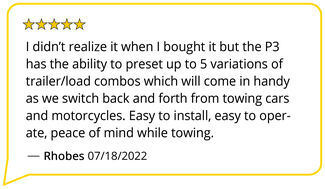
Troubleshoot with Detailed Diagnostics
The P3 makes it easy to troubleshoot problems as they come up, with comprehensible and detailed diagnostics displayed on the screen.
















Diagnostic troubleshooting messages include:
- Battery voltage
- Voltage supplied by stop light switch when brake pedal is depressed
- Output voltage to trailer brakes
- Output current to trailer brakes
Diagnostic warning signs include:
- Open ground
- Overload
- Output short
- Power loss
- No trailer connection
Safety Features
The Prodigy P3 offers advanced safety features to prevent damage to various components of your towing setup.
-Integrated reverse battery protection shields the brake controller and your trailer's breakaway system from shorts.
-When the P3 is not in use, it draws only 3.6 milliamps, minimizing drain on your vehicle's battery.
-Any time your vehicle and trailer are at a standstill with the brakes applied for more than 5 seconds, the hold feature will kick on and reduce power to just 25 percent. This will keep your trailer in place without your brakes overheating.
Installing the Tekonsha P3
Installing the P3 is incredibly simple. You'll mount the bracket to your dashboard then mount the unit to the bracket. Plug the custom harness into your vehicle and into the unit. Done!
Keep in mind that the P3 must be horizontally level and parallel with the direction of travel to work correctly.


With a replacement wiring harness (sold separately) and replacement bracket (TK5906 - sold separately), you can even transfer the Prodigy P3 to another vehicle.


Note: If you don't already have a 7-way plug at the back of your vehicle, take a look at our exclusive 7- and 4-way brake controller installation kit (ETBC7 - sold separately).
What is Proportional Braking?
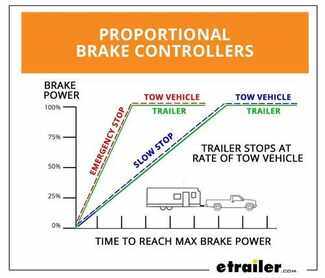
Proportional braking means that your trailer brakes mimic your tow vehicle's brakes. If you slam on the brakes, your trailer brakes will activate with the same intensity; if you brake lightly, your trailer brakes lightly too. The trailer's braking is in proportion to your vehicle and trailer.
The Prodigy P3 uses an internal inertia sensor to detect how your vehicle is braking so it can send the right amount of braking power to your trailer. It measures the inertia of your tow vehicle and activates the trailer's brakes to slow at the same rate. The result is uniform braking across your towing setup. No push-pull action - just smooth, proportional braking every time.
90195 Tekonsha Prodigy P-3 Proportional Trailer Brake Control
Replaces 39526 Hidden Hitch and 20195 Draw-Tite Intella-Stop Xtreme Proportional Brake Control
303100 Tekonsha Brake Control Wiring Adapter with 2 Plugs - Toyota
Replaces Tekonsha 3017-P and 3031-P
Installation Details
California residents: click here

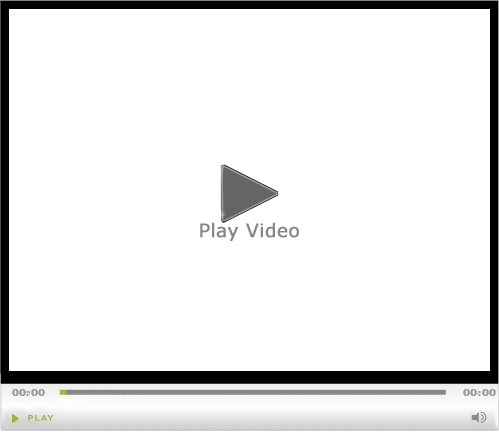
Videos are provided as a guide only. Refer to manufacturer installation instructions and specs for complete information.
Video Transcript for 2015 Toyota Tundra Tekonsha Prodigy P3 Trailer Brake Controller: Complete Installation
Rob: How's it going everybody Rob here at etrailer.com and today we're going to be taking a look at the Tekonsha P3 Trailer Brake Controller on our 2015 Toyota Tundra. Here's what our brake controller looks like once it's installed and we chose to mount ours on the right-hand side of the steering wheel, just so we could see it pretty easily when we're driving and we have access to everything we need to. This is what we consider a traditional style brake controller, because it is going to be a box that has to mount on the dash.There are a lot more newer styles that are coming out where either is a remote style mounting system, where it's not mounted on the dash, or a very small button or dial that's mounted on the dash rather than such a big box. But with this being a traditional style brake controller, it's still is a really nice, very good functioning brake controller. Partially because it's a proportional brake controller. What that means is that when we push on the brakes in our Tundra, it's going to apply the brakes to our trailer in the same time and intensity.
If we have a panic stop and really mashed on the brakes really quickly, it's going to apply the brakes very quickly and pretty firmly to our trailer. But, at the same time, go into a stoplight and we're just easing into that stop and slowly slowing down, it's going to do the same thing to the trailer because there's actually an internal inertia sensor that detects the deceleration or the slowing down of our truck and applies the brakes accordingly to the trailer.I liked the fact that the display is extremely easy to read and this brake controller is actually loaded with a lot of features. If you have a lot of different trailers that you tow or a lot of different people that tow with your vehicle, this can actually store up to five different profiles. So if you have more than one trailer, you can pick which one you want or if a certain driver likes the settings differently than the other, you can have a profile for each driver. It's just really nice that we don't have to go in and start messing with all the settings, resetting all the gain and boost settings.The way we are going to adjust our gain settings is with the arrows on the side.
it's going to have a maximum power of 14 and it'll go all the way down to zero. This is going to be displayed in volts. So that's going to be the maximum output, going to the trailer brakes. At the same time, we also have what's called the boost setting. Now there's a few different levels of this.
Right now it's off and we can see because there's no dots on the screen, but as soon as I go to boost level one, we'll get a little B1 in the corner. You'll also notice that the trailer and that truck got bigger. We go to boost two. Again, we can see the trailers getting larger. And finally on boost three, it's an extremely big trailer compared to the truck.What the boost settings are going to do is it's going to allow the brakes to ramp up to the maximum power quickly.
It's not going to put more power out than you have maximum setting at, but it's just going to allow it to get there quicker and have a little bit more aggression when it first starts out. Because typically the heavier the trailer you have, the more initial braking you're going to want so that you're not putting so much stress on your tow vehicle.Like most brake controllers, this does have that manual override. This is a lever style. I really actually like this because it's very intuitive. You just reach down and you can grab it and it just rotates over to the side and you can apply however much brakes you need to the trailer alone without having to press the brake pedal. That comes in handy a lot if you get trailer sway going on and you just really need to slow down the trailer without having to slow down the truck. But also at the same time, if you have a 5th wheel and you need to get that slider to move back, you can use this to hold the brakes on the trailer and get everything to move.One thing I really like about this is the fact that since it's a proportional brake controller, we do get that really smooth, consistent braking action. But at the same time, if you think about it, if we're not moving at a stoplight, the trailer brake controller is not going to sense any slowing down because we're already stopped. But Tekonsha knows that and they know that you still need that braking power when you're sitting still. So if you apply the brakes in your Tundra and you wait a few seconds after so much time, the brake controller is going to hold the brakes on the trailer at 25% because it's assuming that you're at a stoplight, but it doesn't want to put the maximum power out potentially causing damage to the brakes and really we don't need that much power when we're just sitting at a stoplight.Another nice thing that I really like about this controller is that it works with one all the way up to four axles or eight brake assemblies. If we go into the menu here, you can really see how many options and features are built into this. We can go into the display. We actually have the option of changing the brightness, the color, and the contrast. So if you want to change it to match your dash or the dash lights, there's tons of different colors in here or you can find one that maybe stands out a little bit. You can set the brightness or if you do a lot of night driving, you can turn it down to where it's not blinding. There's just a lot of different things you can do in here. Also in the menu, if we go into brake type, this will let us know that it's going to work with electric or electric over hydraulic brakes, which is really nice.As far as the installation goes, this is one of the easiest brake controllers I've put in because if your Tundra already has the factory tow package, all you're going to need to pick up is the brake controller and the adapter to plug it in. There is a factory port underneath the dash that the adapter will plug right into. All we got to do is mount the brake controller up. In fact, let's go and walk through where that plug is and we'll show you how we got everything in place.To begin our installation. We need to find where we want to mount our brake controller. For us, we're going to be mounting ours on the right-hand side of the steering wheel. We got a nice flat spot on the dash, right underneath these buttons. So we're going to go ahead and put ours right about there.In your kit, you're going to get a few different brackets. We have the traditional style brake controller bracket and that'll work just fine. However, we want to use the, kind of like a pocket style, where it's going to hold the brake controller just like that and it gives you the option to pull it out real easily. So we'll use these small bracket that'll attach to that clamp and it'll have a smaller footprint on the dash if we do ever want to take the brake controller out. The main thing when we go to mount our brake controller is that it's nice and level going across. We have plenty of adjustment so we can mount it at any angle like this, almost any angle, but a pretty good viewing angle. We just need to make sure that it's level and it's not crooked when we're lining it up.You want to make sure when you mount your bracket, that it's nice and straight. Since we're going to be mounting our brake controller in this lower panel, right by this almost like a vent right here, we need to double-check that there's nothing back there before we start drilling and mounting the bracket. I'm going to take a plastic trim panel tool and I'm just going to start pulling on this panel, releasing those clips, and then just verify that there's nothing behind here because that little hole or the speaker grill hole right there, there's nothing back there. There's no electronics. There's no wires. But if we do go down further there is a sensor, some wires on there. We need to make sure we're not down too far. We'll go and click the panel back in place and we grab the bracket and a couple of the screws that come in our kit. I like to get one started, leave it kind of loose, just like make sure it's nice and level.Let me make any small adjustments angling it and then put the second one in. I'm going to take the cradle and we're going to have some machine screws in our kit. They got little washers on them. We're going to pass them through the bracket and you want that cradle to be on the inside. Most likely it's going to be easiest just to get it started a few turns by hand. Obviously, you're not going to have enough room to get a full-size screwdriver in here just because of the dash so I suggest using a bit driver and a small bit and we should have enough room to get in there and tighten everything up.But again, I'll get this one started. Just make sure it's in there and secure. Get the other one started and then we can put our brake controller in and before we tighten it up, we'll get that viewing angle we want. Now that we've got our brake controller bracket mounted and it's ready to go in, we need to get the wiring. Fortunately for us on our Tundra, it has a factory tow package so we're going to be using the adapter to plug it in and there's not going to be running too many wires. It also, fortunately, it's right above where our brake controller is. It's right behind this panel here with these switches. If you, again, grab yourself a plastic trim panel tool. You may be able to do it just by grabbing, but I like to use that trim panel tool to help release those clips on the top. And then at the same time if you pull outward, kind of rotate that panel down and pull outward, it'll release the clips on the bottom.If you look inside it may be right here. This is the plug, but it may be tucked back in there somewhere, but we're looking for a plug that looks like this. We're going to take our brake controller adapter and you can see that the plugs are going to match up. I'll go ahead and plug it in, make sure it locks in place. Give it a quick tug. Make sure it's secure. Then what I like to do is I like to take the other end that's going to plug into our brake controller and I'm going to feed it into that pocket, but I'm going to have it come straight down because we're going to need to hook up our ground wire. Fortunately, we have plenty of slack because it's not attached to the rest of the harness just at the very end of the plug. We'll start routing all this down and we can pull all the slack out once we get it out from the bottom of the dash.With that plugged in, make sure all your other plugs are in place. Then we can put that panel back and make sure all the panels are clicked back in. Now we got our wires down here. We need to find a spot for our ground. I like to find a factory ground or a bolt and nut that's already attached to the factory sheet metal. That way we just prevent having to put any more holes in our dash, in the floorboard, or anywhere else. And we do have a good amount of slack. If we look against the firewall right against the brake pedal bracket, there's a bolt that's going all the way through and this would be a really good ground spot. I'm going to grab myself a 13-millimeter socket and remove that nut.We can slide the ring terminal over and secure everything down. One thing to be mindful is when you are running your wire over, you want to try to stay away from all the pedals and make sure that when you are routing it, it's not going to get caught up on anything or interfere with your pedals, your feet, or anything else. Now the ring terminal is just a little bit too small to fit over that stud. So a quick trick to prevent you from having to cut it off and get a new one is if you take a pair of cutters and if you cut the ring terminal to where it's almost a C shape, we can get it to fit around the stud and then put the nut back and be nice and secure. Just a little trick. That'll prevent you from having to go and get another ring terminal or finding another stud to work with. Let's make sure that ring terminal is around the stud. Then we can replace the nut.I just want to make sure that your ring terminal is nice and secure. It's not spinning around and it's not loose on there. Now I want to make sure that I round that black plug towards the bracket where I'm going to mount my brake controller. I'm just going to take a few zip ties and zip tie all these loose wires under the dash. So one it'll clean it up and you don't have to worry about them interfering with anything. We have all of those wires tied up and we're going to make sure that that plug reaches the bracket, we can plug it into the back of the brake controller. Plug it in and we see that it comes on right away so we know that it's working properly. Let me just slide it into the cradle, make sure those tabs are locked in place, and get it at the angle we want it at.Then we come back and tighten up those screws on the side, just to where there's enough tension to where it's not going to be flopping around. But that bracket is plastic so you don't want to go too tight. Just enough to have a little bit of tension so it'll hold itself. Now that we've got our brake controller turned on, the lights are on, and we know everything's working. I'm going to go ahead and plug in my tester and we'll verify that it's working at the back of the 7-Way. With my tester plugged in, if we look at the top needle or the top meter up there that says brake current, that's going to let us know if our brake controller is sending the power out to the trailer. Go ahead and hit the manual override and as I move that lever over, you can see the needle moving up, letting us know that the brake controller is sending power out.All we'll have to do now is hook up to our trailer and hit the road. But now that we know that it's working, that'll finish up your installation. inaudible 00:14:38 look at Tekonsha P3 Trailer Brake Controller on our 2015 Toyota Tundra.
Customer Satisfaction Score:
96% were satisfied with this product
4% of customers were not satisfied
- Product did not meet expectations
- Wrong item was ordered
- Did not arrive in time
Ratings & Reviews
4.9
3506 reviews
See what our Experts say about this Tekonsha Trailer Brake Controller
- Can I Add Electric Brakes To A 1993 EZ Loader Boat TrailerHello Mike. It sounds like you are wanting to add electric brakes to your boat trailer that currently has no brakes. This is possible, but you will first need to make sure that your axle is equipped with a brake flange at the base of the spindle. The brake flange is necessary for adding brakes. If you do have a brake flange, you will next need to determine your bearing sizes. Electric brakes will require new hubs and drum assemblies, and we need to be sure that there is a drum available...
view full answer... - Hitch, Weight Distribution and Brake Controller Recommendations for a 2017 Toyota Sienna XLEWe can get you everything you need for towing with your 2017 Toyota Sienna XLE. By plastic shield, I believe you are referring to the appearance panel underneath the Sienna, and that will have to trimmed a bit in each of the hitches available for the vehicle. A great Class III hitch would be the Curt # C13105, which is rated for weight distribution and has been given a nearly 5-star review on our site by the over 500 customers that have rated it. As for a brake controller, the wireless...
view full answer... - Will The Curt Echo Manual Override Button C83HR Work Without The App?Hey John, good question. The app must be running in order for the separate manual override button part # C83HR to work. If your phone is not connected to the controller with the app running, the button will not do anything. I know the connectivity issues can be frustrating, but it might not necessarily be something you are doing wrong so much as the controller just being unreliable. This is by far the most common complaint we get about the Curt Echo # C51180 wireless controller. Most...
view full answer... - Difference Between Curt & Draw-Tite Trailer Hitches For 2018 Jeep Wrangler UnlimitedHi Ken, Starting with the wiring harness, I can verify for you the correct fit for the 2018 Jeep Wrangler Unlimited without a tow package is indeed the T-One Vehicle Wiring Harness with 4-Pole Flat Trailer Connector # 118786. Then for the hitches, the biggest difference between the Curt Trailer Hitch Receiver # C13392 and Draw-Tite Trailer Hitch Receiver # DT78MR is the length of the receiver. The Draw-Tite has a shorter receiver that can make it a bit more of a pain to add a ball mount...
view full answer... - Comparing the Universal Installation Kit # ETBC7 and the 7-Way RV Upgrade Kit # ETBC7LThere are a few differences between the Universal Installation Kit part # ETBC7 and the 7-Way RV Upgrade Kit part # ETBC7L. The biggest one is that part # ETBC7 comes with both the power and brake output wire you will need to run to the cab/battery whereas the part # ETBC7L only comes with the power wire you will need to run to the battery. The reason for this is because part # ETBC7L is geared more towards wireless brake controllers like the Curt Echo Mobile Trailer Brake Controller part...
view full answer... - Disc Brake Conversion Kit For 2021 Grand Design Solitude 310GKR With 7,000 lb AxlesHello Rick, thanks for reaching out. The 7,000 lb axle on your 2021 Grand Design Solitude 310GKR uses a standard bearing combination, so finding compatible disc brakes will be easy. Here is what I recommend: - DeeMaxx Disc Brake Kit - 13" Hub/Rotor - 8 on 6-1/2 - Maxx Coating - 9/16" Bolts - 7K # DE68YR - Hydrastar Electric Over Hydraulic Actuator Kit for Disc Brakes - 1,600 psi # HBA16-252-82 The disc brake kits are enough for one axle, so you will need two kits if you want brakes on...
view full answer... - Parts Needed to Add 7-Way to 2024 Hyundai Palisade LimitedThe factory wiring for both the 2023 and 2024 Hyundai Palisade has been a complicated subject. The pre-wiring you're referring to is not an actual trailer connector. You should have factory wiring and connectors which will allow you to add an OEM 7-way. I understand it says they all have this, but I would make sure you can find it on your particular vehicle if you plan to use it. There have been a lot of reports on forums where people said the connection was missing. At this time, nobody...
view full answer... - Will the Redarc Tow-Pro Liberty Controller Work with a 2023 Ford RangerHey Jacques, thanks for reaching out! The Redarc Tow-Pro Liberty # RED52VR will work just fine on your 2023 Ford Ranger, and it will install by splicing into a bundle of wires under your driver side dash. We have a video of this same process of the Prodigy P3 # 90195 on a 2021 Ranger that I'm linking for you to reference, but we don't have anything of the Liberty on a Ranger at this point in time. I'm not sure why we don't have this listed out to fit "with the tow package", but I'll send...
view full answer... - What is the Difference Between the Tekonsha Prodigy P2 and the P3 Brake ControllersActually, the P3 now has the upgraded axis accelerometer like the P2. The Tekonsha P3 Trailer Brake Controller # 90195, will work with both electric over hydraulic brakes on the trailer as well as electric brakes. It has a menu option on the display that allows the user to switch between the two systems. I have included a link to the installation details for the P3. The P2, # 90885, will also work with both electric brakes and electric over hydraulic brake systems but the mode is selected...
view full answer... - Parts Needed For Towing a Camper Behind a 2023 Toyota Tacoma Without Towing PackageSorry for the confusion on the details for the Tekonsha OEM Replacement Vehicle Wiring Harness # 22117 for your 2023 Toyota Tacoma. Since it can be used as a replacement for the OEM tapping into that connector is easier on those vehicles. Since you do not have the connector on your Tacoma you can simply use a Test Light # PTW2993 to find the correct wire on your brake switch which is on the brake pedal mount. Then you will be able to connect a controller like the Prodigy P3 # 90195. I personally...
view full answer... - No Trailer Connection on Tekonsha P3 Brake Controller 90195 on a 2000 Toyota TundraI would start by inspecting the connector on your trailer and the vehicle to make sure there is not corrosion in the connector which could be causing a bad or weak connection. If there is corrosion in the trailer side connector, you would need to replace it with 7-way Connector, part # A7WCB. For the replacement vehicle side connector, you would need Adapter 4 Pole to 7 Pole, part # 30717. For future use, I would recommend using Dielectric Grease for Electrical Connectors, part # 11755,...
view full answer... - How to Pick Out Brakes for 3,500 lb Boat Trailer with Tandem AxlesInstalling brakes on a trailer really isn't too bad. The install is pretty basic and a DIYer like yourself wouldn't have a problem at all. To determine the parts you need though we need to for sure know what axles/spindles you have so that we pick out the right parts. I attached a couple guides for that down below for you to check out. There are a lot of boat trailers that have great results with electric drum brakes so if that's a route you are interested in that's what I would recommend...
view full answer... - Parts Needed To Add Hopkins 7/4 Pole Connector To a 2020 Ford F-150 With Factory 4-WayI have a couple ways you can install the 7- and 4-Pole Trailer Connector Socket # HM40975 on your 2020 Ford F-150 with a 4-way flat factory connector. The first is going to be the easiest but is more costly. You will use the harness from the Curt 7-Way # C56413 and connect to the connector you found. The Curt harness will connect to the factory wiring as seen in the installation video I have linked near the bottom of the page. Otherwise we do have the Hard Wire Connector # 20147 which...
view full answer... - Trailer Hitch And 7-Way Wiring Package For 2019 Kia Sorento Without Factory Tow PackageHello Anton, thanks for reaching out. For your 2019 Kia Sorrento I recommend the etrailer Class 3 Hitch # e98843. This has a 2" receiver, 5,000 ls towing capacity and 750 lb tongue weight capacity. Install video and instructions are linked for you below. For your wiring, there are two kits you will need to complete everything. You will need the Tekonsha T-One Wiring Harness # 118583, as well as the Universal Installation Kit # ETBC7. These will contain everything you need to wire your...
view full answer... - Troubleshooting a Tekonsha P3 Brake Controller that Reads Trailer Not ConnectedIf you sever the blue wire leaving the P3 controller part # 90195 leaving enough room to reconnect it and test the end of the wire leaving the controller with a circuit tester like part # PTW2993 you should see voltage when you slide the manual override lever. If not, then the brake controller is bad. If you see voltage there instead then the problem is somewhere on the brake output circuit of your vehicle or trailer. Corrosion on the trailer connector typically causes this problem. If...
view full answer... - Electric Over Hydraulic Brakes Don't Work w/Brake Pedal on Newer GM Trucks w/OEM Brake ControllerLike you said, many factory integrated brake controllers will not work well with electric over hydraulic trailer braking systems. Some of the newer versions of these controllers now have an electric over hydraulic mode. Check to see if any of your trucks have this mode and, if they do, if the braking starts working with the pedal. Otherwise there are a couple of solutions to solve this issue. First, there may be an adapter that will allow the factory controllers to work but it depends...
view full answer... - Troubleshooting Only One Side of Trailer Brakes Locking UpYes, when the electric signal is sent from the Tekonsha Prodigy P3 Trailer Brake Controller # 90195 to the trailer's brakes, it should cause both sides to lock up. Since only one side is locking up, it could indicate that one brake assembly needs to be manually adjusted. I attached a video that shows how to do this process. If that doesn't get it to respond then there is possibly an issue with the wiring going into the brake assembly which you can test using a circuit tester like # PTW2993....
view full answer... - Recommended 7-Way Trailer Wiring On 2007 Ford E-350 Super Duty VanIf you don't already have a 4-way wiring harness, we need to start there to get your 7-way. For a 4-way, I recommend the Curt T-Connector Vehicle Wiring Harness with 4-Pole Flat Trailer Connector # C56020 which plugs in behind the tail lights of your 2007 E350. You will have to remove the tail light assemblies and interior trim paneling to access the factory connections. I've attached a video to help. Then you will use the Universal Installation Kit for Trailer Brake Controller - 7-Way...
view full answer... - Showing 12V Power On The Red Wire From Tekonsha Prodigy P3 PigtailIt sounds like you are hardwiring the Tekonsha Prodigy P3 Trailer Brake Controller part # 90195. The red wire should only show power at the brake controller when the brake pedal is depressed. It should be connected to the stop light wire on above the brake pedal that only shows power when the brake is depressed. If it is showing power when the brake pedal is not depressed than it is not connected to the correct wire at the brake pedal. The 12V should be showing on the black wire which...
view full answer... - Does Prodigy P3 Brake Controller Eventually Shut Itself Off With No ActivityAfter 10 minutes of inactivity the Prodigy P3 part # 90195 will go into sleep mode which means it basically shuts itself off without losing presets.
view full answer... - Stealth Hitch And Towing Kit For 2024 Volvo XC90Hello Geoff, thanks for reaching out. We do offer a stealth hitch and wiring package for the 2024 Volvo XC90. For that, I recommend the following: - Stealth Hitches Hidden Trailer Hitch Receiver w/ Towing Kit - Custom Fit - 2" # SH27FRT This comes with everything you need to pull a trailer. You get the stealth hitch and rack receiver, plus the towing kit with active harness. The hitch has a max towing capacity of 6,000 lbs so this will be plenty strong for a 2,500 lb enclosed trailer....
view full answer... - Timbren Axle-Less Trailer Suspension System Rated for Higher Than 2,000 PoundsThe Timbren Axle-Less Trailer Suspension System, part # A20RS545, is rated for a total of 2,000 pounds. Essentially, it's designed to work in place of a suspension system and a 2,000 pound standard axle. If you need a 3,500 pound system use part # A35RS545 that has idler hubs with the same 5 on 4-1/2 bolt pattern. If you want to add brakes instead use part # A35RS545E that includes the hub and drums, as well as the brake assemblies. There really isn't anything to retrofit. You just...
view full answer... - Parts Needed to Add Disc Brakes to Trailer with Dexter 12K Axles w/ Electric Drum BrakesThe Kodiak # K2R1258L12 Disc Brake Kit is compatible with a 12K Dexter axle with a 7-bolt brake mounting flange. Your current wheels/hubs should have an 8 on 6-1/2 inch bolt pattern. You'll also need an electric over hydraulic brake actuator, a brake line kit, a break away system and a brake controller that's compatible with electric over hydraulic brake systems. For the electric over hydraulic actuator, I'd recommend going with the Hydrastar # HBA16. Our install techs have found it to...
view full answer... - How to Convert a Trailer with Surge Brakes to Electric Over Hydraulic BrakesYou can convert surge brakes to an electric over hydraulic braking system. To do this, you will need an electric over hydraulic actuator and a brake controller. For an electric over hydraulic actuator, I recommend looking at the Carlisle HydraStar units. If your trailer has drum brakes, you will want part # HBA-10. If your trailer has disc brakes, then you will want part # HBA16. I have also attached a link to all of our electric over hydraulic actuators for you to check out your options. The...
view full answer... - Can Integrated Brake Controller of 2017 Toyota Tundra Be Replaced with P3Yes you can replace the factory brake controller of your 2017 Toyota Tundra with the Prodigy P3 part # 90195. You would just need the correct install harness part # 3031-P to plug the P3 in place of the factory controller.
view full answer... - Location of Brake Controller Port on 2015 Toyota TundraThe brake controller port for the 2015 Toyota Tundra is located behind the section of the dashboard with the tow/haul button. To reach the connector you will need to locate the notch in the access panel in the center of the dash near the driver's side. Using a trim panel puller, carefully pry the panel out and undo the locking tabs to remove the panel. You will find the mating connector behind this portion of your dashboard. Simply plug the Tekonsha Plug-In Wiring Adapter, # 3031-P, into...
view full answer... - Location of Brake Controller Plug on a 2016 Toyota Tacoma TRD Sport Off-Road w/Factory Tow PackageGreat news! I can help you find the brake controller harness on your truck. Since you have a factory tow package on your 2016 Toyota Tacoma you will have a plug for a brake controller in your dash. According to the instructions on the # 3031-P harness for the Proportional Brake Controller P3 # 90195, which I highly recommend, the plug is located above the driver kick panel. I have linked the full set of instructions for the # 3031-P adapter to this page for your convenience. For a...
view full answer... - Recommended Trailer Brake Controller When Switching From Factory Controller on 2016 Toyota TundraYou can switch from the factory controller to an aftermarket on your 2016 Toyota Tundra Brice. I personally am a big fan of the Tekonsha Prodigy P3 # 90195 which will connect with the Harness # 3031-P. The reason I like the P3 is the ease of use and versatility. It can work with trailers up to 4 axles and electric or electric over hydraulic brakes. The LCD screen is very easy to read and understand and will even tell you what is wrong and what to check should you have any issues with the...
view full answer... - Is Tekonsha Prodigy P3 Brake Controller Pigtail Wiring Harness Sold SeparatelyI can understand not wanting to undo the wiring and then re-do it, and the pigtail harness is available separately for the Tekonsha Prodigy P3 # 90195. The correct part is the following: - Replacement Brake Control Plug-In Harness # 20127 One end of this will plug into the P3 and the other end will hardwire to your new vehicle. In case you were interested in a new mounting bracket as well, the correct part for that is the Replacement Mounting Bracket Kit for Tekonsha Prodigy P3 Trailer...
view full answer... - Installing the Prodigy P3 Brake Controller on a 2018 Toyota TundraYou definitely made a great purchase with the P3 # 90195! Since you already have the OEM brake controller in your 2018 Toyota Tundra I would be surprised if you don't have to take it in to a dealer to have them turn something off. I can definitely attach that tech bulletin so that you can read it easier but you actually may not need to do all of the hardwiring. Apparently about midway through the 2018 model year Toyota started putting the plugs in the Tundra pickups. If you check the...
view full answer... - Where Is Brake Controller Install Harness on 2017 Toyota TacomaOn a 2017 Toyota Tacoma the location to install the # 3031-P is behind the kick panel to the left of your left foot. I attached a picture. You'll need to pull off the kick panel.
view full answer... - Does Brake Controller Install Harness for 2015 Toyota Tundra Have Extra Ground WireThe brake controller harness part # 3031-P which is the correct one to install the Prodigy P3 part # 90195 in your 2015 Toyota Tundra does have a ground wire that needs to be ran outside of the harness as well. We drilled a hole on the firewall when we installed the ground strap as we found that to be the easiest when we used this harness to install a controller in a 2013 Tundra like yours. See video I attached.
view full answer... - How to Mount Prodigy P2 part # 90885 in 2017 Toyota TacomaThe P2 # 90885 must be mounted on a level horizontal (side-to-side) plane and must be lined up with the direction of travel for the internal sensor to function properly. For an install harness in your 2017 Toyota Tacoma what you need is the part # 3031-P. Most people install the controller on the lower dashboard of the vehicle to the right of the steering wheel where it wouldn't interfere with you right leg.
view full answer... - Is An Additional Ground Needed for the Brake Controller Harness On a 2020 Toyota TacomaThe correct brake controller adapter plug for a 2020 Toyota Tacoma is going to be dependent on the brake controller. If you are using the Tekonsha Prodigy P3 Trailer Brake Controller part # 90195 for example then you'll need the Tekonsha Custom Wiring Adapter for Trailer Brake Controllers part # 3031-P which does indeed require an additional ground. That said, there is most likely an existing stud you can use for the ground without having to drill a hole. The other option is the Curt Echo...
view full answer... - Best Brake Controller to Replace Integrated Controller of 2018 Toyota TundraThe Prodigy P3 part # 90195 is basically the gold standard for brake controllers in terms of performance, reliability, and ease of use. This would be the best option for your 2018 Toyota Tundra to replace your integrated brake controller.
view full answer... - How to Install Brake Controller and 7-Way on Toyota Truck with 4-WayTo convert your 4-way to a 7-way and install the P3 part # 90195 all you need is the brake controller install adapter part # ETBC7. This comes with everything needed to wire up the brake controller as well as convert from the 4-way to a 7-way.
view full answer... - Recommended Brake Controller and Plug in Adapter for a 2017 Toyota TundraThe Prodigy P3 item # 90195 is compatible with your 2017 Toyota Tundra. This is a proportional brake controller that activates your trailer's brakes when your Tundra decelerates. You will want to use the Custom Wiring Adapter for Trailer Brake Controllers item # 3031-P to complete your installation without cutting or splicing wires.
view full answer... - Will Tekonsha Primus IQ Work With 2015 Toyota TundraThe Tekonsha Primus IQ # TK90160 will work great on your 2015 Tundra. If you have the factory 7-way trailer connector you can use the plug-in adapter # 3031-P for the brake controller. If you do not have a 7-way connector you will need to hardwire the brake controller. If you have a 4-way trailer connector you will need part # ETBC7. This connects to the 4-way and then additional wiring will need to be done as shown in the attached drawing.
view full answer... - Recommended Brake Controller for 2022 Toyota TacomaI really like a remote-mounted controller like the Redarc Tow-Pro Liberty, part # RED24FR and the # RED99FR wiring harness. The brake controller itself mounts under the dash, out of sight. The controller would be operated via the control knob which could be installed using an un-used switch knockout in the dash or center console. A mounting bezel like part # 331-TPSI-002 would make for a factory-looking installation. The Tekonsha # TK90160 Primus you'd looked at would also work just fine...
view full answer... - Location Of Brake Controller Port On 2015 Toyota TundraOn your 2015 Tundra, the vehicle side connector is located behind an access panel located in the center of the dash, just to the right of the steering column. You can check out the attached photo that shows where this panel is located. Using a trim panel puller, carefully pry the panel out and undo the locking tabs to remove the panel. You will find the mating connector behind this portion of your dashboard. I have attached a photo that shows what the connector will look like. If you...
view full answer... - Brake Controller Install Harness for 2023 Toyota TacomaThe brake controller install harness part # 3031-P is the correct install harness for a Tekonsha Primus brake controller part # TK90160 in a 2023 Toyota Tacoma.
view full answer... - What Is The Best Brake Controller For My 2023 Toyota TacomaFor your 2023 Toyota Tacoma I recommend the Tekonsha Prodigy P3 # 90195. This is a fully proportional dash mount controller and can control up to 4 axles at once, so this will work great for your 2 axle trailer. Large accessible buttons and an LCD display make it very easy to use. Controls for changing setting and output are right at your fingertips. You also have the option to use a plug and play pigtail # 3031-P. All you will have to do is mount the controller, plug in and connect the...
view full answer... - Which Harness for 2013 Chevy Silverado 1500 to Install Tekonsha Brake Controller I have a solution for you, but there is not a plug and play harness available for the 2013 Chevy Silverado 1500; the wires are available to tap into, but you will need to hard wire in the connections. Since you've got a Tekonsha Prodigy P3 # 90195 you'll need the Replacement Brake Control Plug-In Harness for Tekonsha and Draw-Tite Brake Controller 12" Long # 20127. I've linked an installation video of this pigtail harness for you to check out on a similar Silverado for you to check out.
view full answer... - Recommended Brake Controller and Install Location for a 2017 Toyota TacomaThe best place to locate a brake controller is, like you said, out of the way, but also in a spot that is easy for you to activate the manual override switch in case of an emergency situation. Most people mount the controller on the underside of the dash just to the left or right of the steering wheel on the driver side. Since pretty much every brake controller is relatively the same size (about the size of your hand) I recommend going with the Tekonsha Prodigy P2 # 90885. This is a great...
view full answer... - Brake Controller Harness For 2023 Toyota Tacoma For Tekonsha Brake ControllerYes you sure can, and I verified directly with Tekonsha the correct adapter needed for your 2023 Toyota Tacoma, the Tekonsha Custom Wiring Adapter for Trailer Brake Controllers # 3031-P.
view full answer... - Installation of Brake Controller Custom Harness on 2018 Toyota Tacoma SR5The Tekonsha Custom Wiring Adapter for Trailer Brake Controllers - Dual Plug In # 3031-P will connect to your Tacoma's factory harness. The harness will be located underneath and left of the steering column, behind kick panel taped to another harness near the emergency brake pedal. There will be a white 10-pin connector that mates with the one on the adapter.
view full answer... - Installing Brake Controller on 2014 Toyota Tundra Using OEM Brake Controller PigtailI'm assuming you're speaking of the factory brake controller pigtail. The wire colors you mention don't match the ones I show, so you'll need to do some testing. To determine which wire performs which function, you'll need to plug the pigtail into the connector under the dash. Then, use a circuit tester like part # PTW2993 to test each wire. One wire should provide a constant 12-volts. This is the power wire that would connect to the black brake controller wire. Another wire will only...
view full answer... - Replacing OEM Brake Controller on 2016 Toyota Tundra With Tekonsha Prodigy P3 # 90195Since your 2016 Toyota Tundra already has the factory 7-Way and wiring installed, replacing your OEM brake controller with the Tekonsha Prodigy P3 # 90195 will be a breeze. All you will need to do is choose where you would like to mount the bracket for the P3 and then use the Plug-In Wiring Adapter # 3031-P and connect it to the connector under your driver's side dash. Since you have an OEM controller installed it will be the connector that is installed on that. I have attached a video...
view full answer... - Recommended Brake Controller and Plug in Harness for a 2016 Toyota Tundra Yes, it will Mark. The Tekonsha Prodigy P3 Trailer Brake Controller w/ Custom Harness item # TK58UR is exactly what you need for your 2016 Toyota Tundra. It is a proportional brake controller that stops your trailer with the same amount of force you are braking with. The item # TK58UR includes a harness that will give you a simple plug and play installation, which will require no cutting or splicing of wires. I have linked an installation video below that will show you how to get it set...
view full answer... - Parts Needed to Install Prodigy P3 Brake Controller on a 2015 Toyota Tundra with Factory 7-WayHey Randy, thanks for reaching out and providing all the details! What you need for your 2015 Tundra is the Tekonsha Prodigy P3 Trailer Brake Controller w/ Custom Harness # TK58UR. This kit comes with the Prodigy P3 controller along with the wiring adapter that plugs the controller directly into the OEM plug under the driver side dash of your truck. I've attached an installation video where Rob installs these exact parts on a 2015 Tundra so you can follow along with the video when you...
view full answer...
Do you have a question about this Trailer Brake Controller?
Info for this part was:






At etrailer.com we provide the best information available about the products we sell. We take the quality of our information seriously so that you can get the right part the first time. Let us know if anything is missing or if you have any questions.







































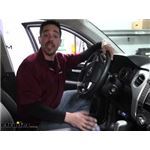
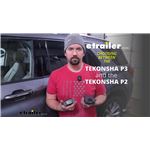
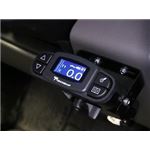





























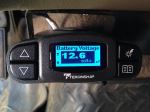



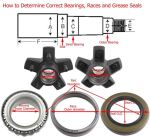






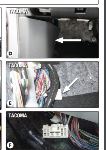





Thank you! Your comment has been submitted successfully. You should be able to view your question/comment here within a few days.
Error submitting comment. Please try again momentarily.